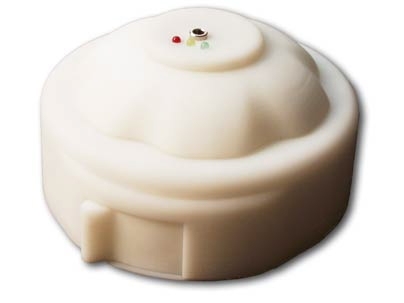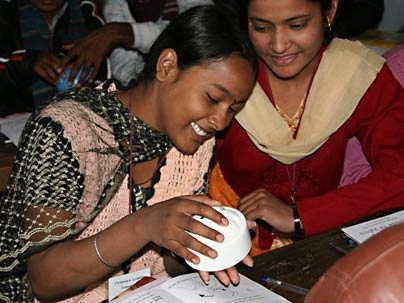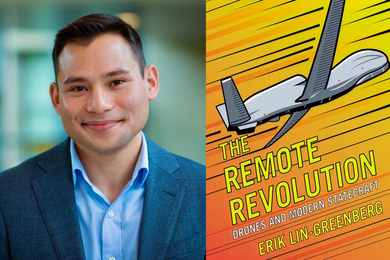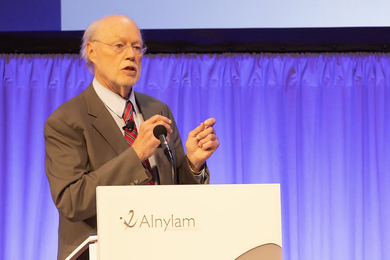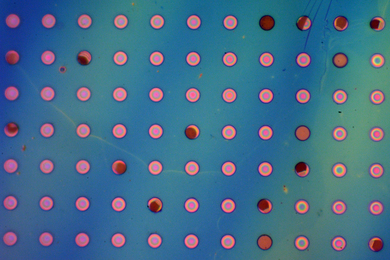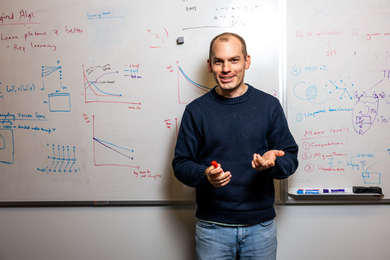In The World is a new column that explores the ways people from MIT are using technology--from the appropriately simple to the cutting edge--to help meet the needs of local people in places around the planet. If you know of a good example and would like the News Office to write about it, please e-mail dlc1@mit.edu.
Tuberculosis has long been eradicated from the world's industrialized nations but continues to take a terrible toll in a few poor, rural regions of Asia and Africa. Every year, 10 million new cases are diagnosed and two million people die of the disease.
It's not that new treatments are needed--medical science long ago figured out how to cure tuberculosis using a cocktail of antibiotics. The problem is getting the medicine to the people who need it and, most difficult, making sure they follow the six-month regimen of daily doses.
Failure to follow the regimen not only leads to likely death of that patient, but fosters the development of antibiotic-resistant strains of the disease. "The problem is, how do you get people to take this complex regimen," says Manish Bhardwaj, a doctoral student in the Department of Electrical Engineering and Computer Science who works in the Microsystems Technology Laboratories.
After a year of hard work and about eight revisions, Bhardwaj and a team of collaborators think they may have found the answer. It's a high-tech solution in a simple, inexpensive and easy-to-use -package.
The first part of the two-component system is a kind of "smart" pillbox, called the uBox. It has 14 chambers that can each be loaded with several pills, which it dispenses from one chamber per day. To alert the patient that it's time to take the medicine, the box flashes its lights and sounds a buzzer. When the compartment is opened, the uBox records the exact time and prevents double-dosing by refusing to open again until the next treatment is due.
After two weeks, a health care worker reloads the box and digitally records and transmits the information stored in it. Doctors and public health services can then get complete data on compliance, patient by patient, in almost real time, instead of having to wait until the end of the six-month treatment.
"How do you know if pills are getting to the patients or if patients are taking them? Today, there's no good way of doing this," Bhardwaj says. If people fail to take all their pills, "it is possible to do harm by treatment that doesn't have good adherence." Missing medication can lead to the development of resistant strains, which can then be spread by that noncompliant patient. "The people they infect have no chance." Today, less than half of the patients that start the regimen successfully complete it..
"We want to make sure the worker is motivated," Bhardwaj says, and at present there's no way to tell which workers are diligent about making the calls and which ones may skip some of their appointed -visits. Accordingly, the uBox has an additional feature: a receptacle for a tiny key, like a headphone plug, which is carried by the visiting health care worker. At each visit the worker inserts the key, thus recording the fact that the patient really has been visited--another important gauge of compliance.
The second part of the group's new system is a cell phone, called the uPhone. By using special software, health care workers can record a patient's temperature, weight, and answers to a list of questions related to symptoms, which adds to the set of detailed patient data analyzed by doctors monitoring the study.
By looking at patterns of effects, the doctors can tell which field workers are achieving the best adherence rates with their patients and find out just what it is that those people are doing right. They can then be recruited to train additional workers.
Bhardwaj has been working with MIT alumni Goutam Reddy and Sara Cinnamon on the engineering and electronics of the pillbox, doctoral student Bill Thies and alumnus Pallavi Kaushik on the uPhone software, and MIT seniors Oliver Venn and Jessica Leon on fundraising and logistics.
Bhardwaj and Thiess went to Bihar province this January to begin their first field test of the product, conducting a training session for 22 workers who will, in turn, train the field workers to distribute the pillboxes in the field. In late April, Bhardwaj will return to Bihar to train workers an two new sites. The first actual field test with 100 of the boxes and 10 cell phones should start in mid-May.
If all goes well, a second round of testing, using 1,000 uBoxes, is set to begin. After that, it all depends on the results--and on the ability to raise funds for future deployment. Health officials in India are already keenly interested in this test, and Bhardwaj is about to meet with representatives of the Bill & Melinda Gates Foundation to discuss possible collaboration and support..
The Ven. Tenzin Priyadarshi, MIT's Buddhist chaplain, helped to get the project started and says, "I am hopeful that the uBox-uPhone project will revolutionize the way we understand and provide health care in rural areas of the world."
While Bhardwaj is proud of the product his team developed, he is not proprietary about it. "We hope to make the uBox and the uPhone the standard of treatment in Bihar. We worked very hard to make something very simple and elegant," he says. "But we'd be delighted if someone beats us to it and builds a uBox cheaper. We hope other people will copy us."
A version of this article appeared in MIT Tech Talk on February 6, 2008 (download PDF).
